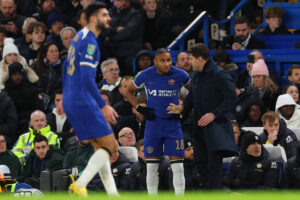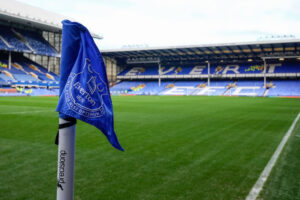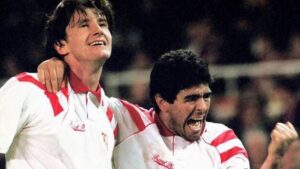It’s hard to believe that ten years have passed since the 2006-07 season. It was a memorable yet very controversial campaign, not just for English football but on the continent as well. A time when the term “Top Four” in the Premier League meant just four specific teams, it seemed that Chelsea and Manchester United would be managed by José Mourinho and Sir Alex Ferguson forever. It was a time when spending £30 million would break the British transfer record.
Below is a summary of the talking points that headlined the back pages of the newspapers in the 2006-07 season.
Goodbye Highbury, Hello Emirates
When the marble halls of Highbury finally closed following a charity match in June 2006, it brought a 93 year love affair to a close. It also signalled the end of a seven-year saga involving Arsenal’s new ground. Following the famous Taylor Report, the Gunners had tried to extend several of the stands at Highbury, with no success. Every attempt was met by opposition from the local council.
In late 1999 it was decided that Arsenal would move to a new 60,000 capacity stadium at Ashburton Grove. It took several years to choose a suitable site, and the costs for building continued to rise at an alarming rate. It’s no secret that this harmed Arsenal’s transfer budget for several seasons. It was confirmed in 2004, shortly after construction finally began, that the ground would be named The Emirates stadium, following a new sponsorship deal with the airline.
The first Premier League fixture at the new stadium took place on the opening day of the 2006-07 season. It also signalled the return of Arsenal’s red shirts with white sleeves, having worn a redcurrant colour shirt for their final season at Highbury. Aston Villa’s Olof Mellberg scored the first competitive goal at the Emirates. Gilberto Silva became the first Arsenal player to do so in the same game, which finished 1-1.
The Carlos Tevez Affair
Following the 2006 World Cup, the performances of Argentina striker Carlos Tevez attracted many admirers. Several of Europe’s top clubs were interested in his talents, but were put off by the uncertainty surrounding any potential transfer. Tevez was part-owned by Media Sports Investment, headed by Kia Joorabchian.
On August 31st 2006, it was confirmed that Tevez and his international team-mate Javier Mascherano were joining West Ham United. Both were owned by MSI, and were playing for Brazilian club Corinthians at the time. Both had underwhelming starts under then manager Alan Pardew. In December, Pardew was sacked, and replaced by Alan Curbishley.
Mascherano made just five league appearances for the club before transferring to Liverpool in January. West Ham were embroiled in a relegation scrap, and it looked like one from which they were not going to escape. It wasn’t until Tevez scored his first goal in March that his performances began to influence the team. He scored a further six times, including a winning goal against Manchester United at Old Trafford on the final day of the 2006-07 season.
The goal against United kept West Ham in the Premier League. Sheffield United, who were relegated as a result, launched an appeal to be reinstated. They argued that West Ham had fielded an ineligible player, whom they did not own. The Premier League fined West Ham £5.5 million for breaching the rules of third-party ownership, but did not relegate them.
Once The Blades realised that they were not going to be reinstated, they sought financial recompense. In March 2009, the two clubs finally agreed an out-of-court settlement of £20 million. The agreement was that West Ham would pay £4million per year over the following five seasons. By this time Tevez had joined, and was preparing to leave, Manchester United.
Takeovers Galore
No fewer than three Premier League clubs found themselves under new ownership during the 2006-07 season. In September 2006, Aston Villa fans were finally granted their wish to be rid of “deadly” Doug Ellis. American tycoon Randy Lerner became chairman after becoming the majority shareholder. Initially, he injected huge sums of cash into the club and the team challenged for the Champions League places. A far cry from today’s situation.
In November, West Ham United once again found themselves making headlines. This time it was because Icelandic businessman Eggert Magnússon headed a consortium who finalised an £85million takeover. Magnússon initially became executive chairman, but stepped down to non-executive after four months in charge. In December 2007, his 5% stake in the club was bought out by Björgólfur Guðmundsson, whose time in charge was very brief. Following the collapse of the banking system in Iceland, Guðmundsson filed for bankruptcy in 2009. West Ham were then taken over by asset management company CB Holding.
In February 2007 the immediate future of Liverpool was settled. Following weeks of speculation, Tom Hicks and George Gillett finally completed their takeover of the club. It didn’t take long for them to become unpopular with the Anfield faithful. Six months prior to their takeover, plans to move to a new stadium had been laid in place. These plans disappeared under the club’s new owners.
During their tenure, Hicks and Gillett had public rows with then manager Rafael Benítez and CEO Rick Parry. They then started rowing with each other. There were also reports that the pair were struggling to pay off the interest on the loans taken out to buy the club. It portrayed the club in such a negative light that the owners and their families began receiving death threats. In 2010 New England Sports Ventures, headed by John Henry, bought the club. Nobody at Anfield misses Hicks or Gillett.
The Resurgence of Manchester United
Since their last title win in 2003, Manchester United had had a muted few seasons. While never threatening to drop out of the Champions League places, they posed no threat to the Premier League title. In 2005 and 2006, Mourinho’s Chelsea had effortlessly won the title while others stood and watched. When they spent a reported £30 million on Andriy Shevchenko from AC Milan, it seemed they would be invincible. Not quite.
Despite the fact that Shevchenko was one of the best strikers in world football, he didn’t fit into Mourinho’s system. Rumours were that the Portuguese coach wanted neither him nor Michael Ballack; that they were owner Roman Abramovich’s signings. While Chelsea made a stuttering start to the 2006-07 season, United flew out of the traps. They won their first four games, and despite the occasional defeat they topped the table all season.
During the previous few campaigns, United had been building a new team centred around young talent. Wayne Rooney and Cristiano Ronaldo were now maturing, and despite their spat at the World Cup they made a magnificent partnership. Defenders Nemanja Vidić and Patrice Evra had looked out of their depth when they arrived midway through the previous campaign. Once they settled they both became indispensable to the manager. Both went on to become club legends.
Paul Scholes had recovered from a mystery eye condition, and proved he was back to his best with some memorable displays. He forged a great midfield partnership with new signing Michael Carrick. A masterstroke by Ferguson saw him sign Swedish star Henrik Larsson on loan from Helsingborgs for ten weeks. While not prolific in terms of goals, he replaced the injured Louis Saha in attack and plugged the gap brilliantly.
All of these elements contributed to United’s ninth Premier League title, confirmed when Chelsea drew 1-1 at Arsenal. It was the 15th time the club had been champions of England. It wouldn’t be the last, as they won it the following two seasons.
The New Wembley
In October 2000, the famous Twin Towers of Wembley closed for the final time. The stadium was to be demolished immediately and a new multi-purpose ground erected in its place. The new Wembley Stadium was scheduled to be completed in 2003. Unfortunately, due to legal difficulties and costs running higher than anticipated, several delays occurred. The old ground wasn’t demolished until 2002, and the opening of the new one kept being pushed back.
The first match at the new Wembley was in March 2007, although the official opening wasn’t until May. The 2007 FA Cup Final between Chelsea and Manchester United marked the occasion. England played their first match there in June: a 1-1 draw with Brazil. The ground has hosted many concerts since then, and two Champions League finals to date.
Calciopoli
The biggest story from the continent was that Juventus spent the 2006-07 season in Serie B. In their long and illustrious history, this is the only time they have played outside the top flight. It followed the Calciopoli scandal, where several clubs were implicated in match fixing allegations two years previously. Juventus were found to be the chief culprits.
Lazio, Reggina and Fiorentina were also relegated to begin with, but reinstated with a point deduction following appeal. Juventus’ appeal failed, and they were also stripped of their Serie A titles between 2004 and 2006. AC Milan were given a hefty points deduction, and eliminated from the Champions League. They were later allowed back in, and ironically went on to win it.
Several Juventus officials, including Luciano Moggi, were eventually jailed for their part in the scandal. The final findings of the Supreme Court were released in 2015, meaning the case took nine years to be resolved. The name of Italian football was dragged through the mud, and has struggled to recover since.
Any other business
There were, of course, many other talking points from the 2006-07 season. Steve McLaren took over as England manager, and immediately dropped David Beckham from the squad. Leeds United were relegated to the third tier of English football for the first time in their history, after being placed into administration.
Other talking points included Fulham‘s Maurice Voltz scoring the 15,000th Premier League goal in a 2-2 draw at Chelsea. Sam Allardyce ended a seven-year association with Bolton Wanderers shortly before the end of the season. He was replaced, briefly, by Sammy Lee. A match between Chelsea and Reading saw goalkeepers Petr Čech and Carlo Cudicini both receive head injuries. Čech’s was so serious that he has since worn a protective helmet when playing, and will for the rest of his career.
You could write an entire book on the events of such an amazing season. The landscape of football has changed so much since then. It will be interesting to see in ten years’ time how we’ll look back at the 2016-17 season.
Main Photo






